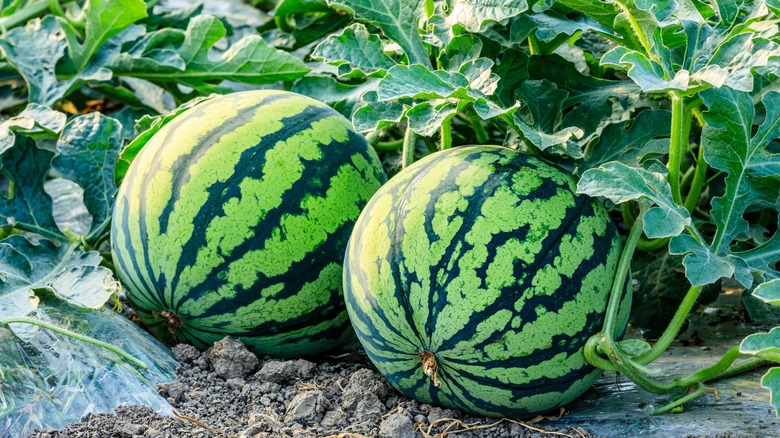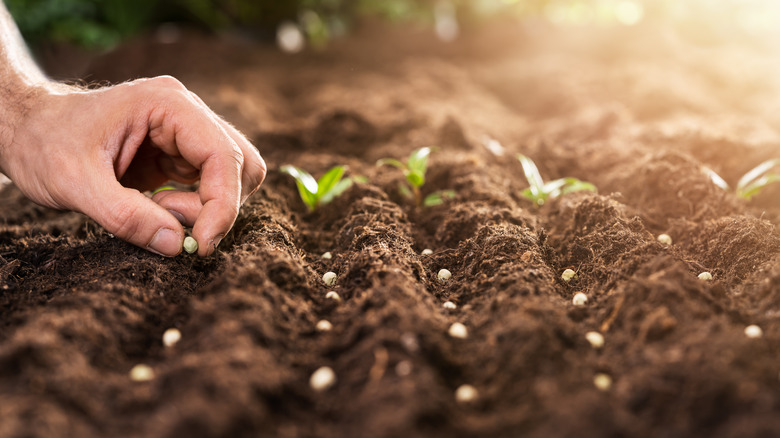The Benefits Of Growing Melons Alongside Corn In The Garden
If you're a diehard gardener who boasts a beautiful yard full of herbs, fruits, and gorgeous flowers, then you already know the struggle of trying to fit as many plants as you can in a limited space. This doesn't always end well unless you plan your crops accordingly, and that usually means practicing the art of companion planting. Companion planting basically means planting different species of crops near each other in order to harvest the benefits that one or both plants can potentially give each other. Benefits include pest deterrence and better health. If you are looking to add some delicious melons to your garden, then strongly consider planting a suitable companion plant for them, such as corn.
Corn isn't always the best option for companion planting if you're growing most other common crops. It is pretty risky growing corn and tomatoes side by side because they tend to have similar pests, and the same goes for eggplants and peppers. However, melons belong to the Cucurbitaceae family, whereas the hookworm, a common tomato pest, only attacks members of the nightshade family Solanaceae. If you're still a bit skeptical about planting corn and melons together, then you may want to take a look at the full range of benefits they provide for each other.
Melon protects corn from weeds and helps retain moisture
Companion planting usually works well when the crops possess opposite requirements and needs, but melon and corn share a lot of similarities. Corn is a stalky plant that towers over other plants, while melons are climbing and creeping plants. According to Better Homes & Gardens, because of this, melons are able to cover the soil around the corn stalk, giving no room for weeds to steal nutrients. This characteristic also means that melon leaves act almost like a natural mulch, covering the ground and preventing moisture from escaping. This means you won't have to worry about watering as much as usual.
Melon and corn plants also require a lot of nutrients to produce a healthy, quality yield. Their perfect synchronization means that you don't have to worry about fertilizing too little or too much. Since they both benefit from more nutrients, fertilizing both at once will suffice. Half the work for the full effect never sounded so good.
Things to remember when companion planting melon and corn
When companion planting, it's important to know where to position your crops in order to harness all the benefits of having them side by side. Growing melons in particular calls for proper calculation because they need to be spaced well enough from each other and given enough room for their vines to creep along the ground. The distance depends on the species of melons, but a spacing of about five to eight feet should do for most types. Melons are also perfect for a raised garden bed rather than just being planted in the ground. This helps with soil drainage, an essential requirement of melons.
Being a tall plant, corn gives plenty of shade to the crops below it. You can plant your corn near enough to the melons for them to benefit from the soil cover that the melon leaves provide, but not too close that it shades the fruit. Some people believe melons benefit from the shade that corn provides, but melons do best with full sunlight for several hours per day.


